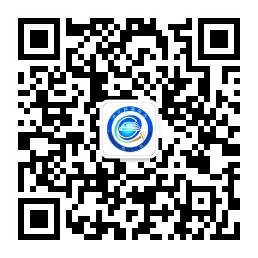

Construction and validation of a risk factor and its risk prediction nomogram model for the development of esophageal stricture after radiotherapy for esophageal cancer
作者:姜琦,闵旭红,王尚虎,张茜茜,陈鹏,王杰,曾嵘
单位:安徽省胸科医院 肿瘤放疗科,安徽
合肥 230001
Authors: Jiang Qi, Min Xuhong, Wang Shanghu,
Zhang Qianqian, Chen Peng, Wang Jie, Zeng Rong
Unit: Department of Oncology Radiotherapy,
Anhui Provincial Chest Hospital, Hefei 230001, Anhui, China
摘要:
目的 分析食管癌患者放疗后发生食管狭窄的危险因素并构建列线图模型,并进行验证。方法 回顾性选取2015年11月至2021年5月安徽省胸科医:肿瘤放疗科收治的151例食管癌患者作为研究对象,根据放疗后是否发生食管狭窄将其分为发生食管狭窄组(n=42例)和未发生食管狭窄组(n=109例)。分析患者的临床资料,应用单因素、Lasso和Cox回归分析危险因素,并构建列线图模型。结果 本研究共纳入151例食管癌患者,经食管X射线片和钡餐检查确诊42例患者出现食管狭窄,发生率为27.81%;两组患者临床资料比较,肿瘤侵犯食管周径比例(周在性)、化疗、放疗剂量、病灶纵向长径≥5 cm、放射性食管炎、抗生素或激素是否应用等,差异均有统计学意义(均P<0.05);Lasso、Cox回归分析结果表明:周在性>1/2 周(OR=4.700, 95%CI: 1.873~11.796)、化疗(OR=2.506, 95%CI: 1.000~6.276)、放疗剂量≥60 Gy(OR=4.513, 95%CI: 1.787~11.398)、病灶纵向长径≥5 cm(OR=4.474, 95%CI: 1.722~11.621)、放射性食管炎(OR=5.043, 95%CI: 1.930~13.178)是食管癌患者放疗后发生食管狭窄的独立危险因素(均P<0.05);列线图模型C-index为0.848,校正曲线的预测值与实测值走势基本一致,AUC为0.826,阈值概率在3%~65%范围内时净获益值较高。结论
基于周在性>1/2周、化疗、放疗剂量≥60 Gy、病灶纵向长径≥5 cm、放射性食管炎构建的列线图模型可预测食管癌放疗后发生食管狭窄的风险,有助于临床及早筛查和进一步改善治疗计划。
关键词: 食管癌;放疗;食管狭窄;危险因素;列线图;预测模型;风险
Abstract:
Objective To analyze the risk factors for the
development of esophageal stricture after radiotherapy in patients with
esophageal cancer and to construct a nomogram model. Method One hundred and
fifty-one patients with esophageal cancer admitted to the Department of
Oncology Radiotherapy of Anhui Chest Hospital from November 2015 to May 2021
were retrospectively selected as the study population, and they were divided
into the group with esophageal stenosis (n=42) and the group without esophageal
stenosis (n=109) according to whether they developed esophageal stenosis after
radiotherapy. The clinical data of the selected patients were analyzed, and the
risk factors were analyzed by applying univariate, Lasso and Cox regression,
and the column nomogram model was constructed. Result A total of 151
patients with esophageal cancer were included in this study, and 42 patients
were confirmed to have esophageal stenosis by esophageal X-ray and barium meal
examination, with an incidence of 27.81%. The clinical data of the two groups
were statistically different from those of the two groups (all P< 0.05),
such as proportion of tumor invading the entire esophagus, chemotherapy,
radiation dose, longitudinal diameter ≥5 cm, radiation esophagitis, whether
antibiotics or hormones were used(all P< 0.05). The results of Lasso and Cox
regression analysis showed that the risk factors for esophageal stenosis after
radiotherapy were as follows: invading week >1/2 week (OR =4.700, 95%
CI:1.873 -11.796), chemotherapy (OR =2.506, 95% CI:1.000 -6.276), radiotherapy
dosage≥60Gy (OR =4.513,95%CI:1.787-11.398), lesions length ≥5cm(OR
=4.474,95%CI: 1.722-11.621)and radiation esophagitis (OR =5.043, 95%CI:1.930-13.178).
The C-index of the line graph model is 0.848, and the predicted value of the
calibration curve is basically the same as the measured value. The AUC is
0.826, and the net gain value is higher when the threshold probability is in
the range of 3% to 65% . Conclusion The nomogram model constructed based on
invading week > 1/2 week, chemotherapy, radiotherapy dose ≥60 Gy, lesion
longitudinal diameter ≥5 cm, and radiation esophagitis can predict the risk of
esophageal stenosis after radiotherapy for esophageal cancer, which is helpful
for early diagnosis and treatment of esophageal cancer.
Key Words: Esophageal cancer;
Radiotherapy; Esophageal stricture; Risk factors; Nomogram; Prediction model;
Risk


关注我们